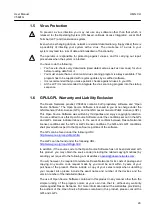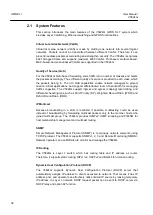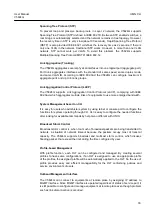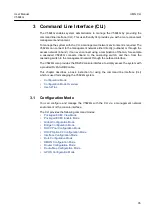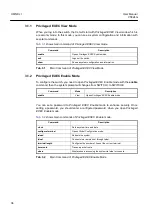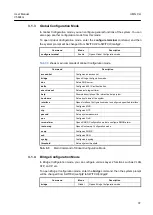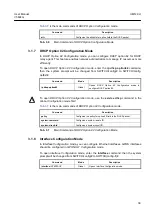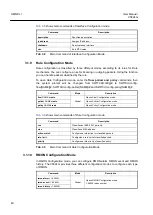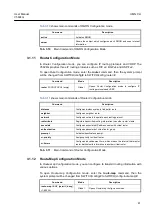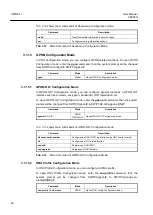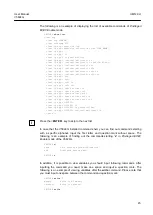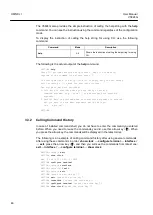
UMN:CLI
User Manual
V5824G
32
2.1
System Features
This section introduces the main features of the V5824G GPON OLT system which
provides Layer 3 switching, Ethernet switching and GPON functionalities.
Virtual Local Area Network (VLAN)
Virtual local area network (VLAN) is made by dividing one network into several logical
networks. Packets cannot be transmitted between different VLANs. Therefore it can
prevent needless packets accumulating and strengthen security. The V5824G recognizes
802.1Q tagged frame and supports maximum 4096 VLANs. Port-based, protocol-based,
MAC-based, and subnet-based VLANs are supported in the V5824G.
Quality of Service (QoS)
For the V5824G, QoS-based forwarding sorts traffic into a number of classes and marks
the packets accordingly. Thus, different quality of service is provided to each class, which
the packets belong to. The rich QoS capabilities enable network managers to protect
mission-critical applications and support differentiated level of bandwidth for managing
traffic congestion. The V5824G support ingress and egress (shaping) rate limiting, and
different scheduling type such as Strict Priority (SP), Weighted Round Robin (WRR) and
Deficit Round Robin (DRR).
IP Multicast
Because broadcasting in a LAN is restricted if possible, multicasting could be used
instead of broadcasting by forwarding multicast packets only to the member hosts who
joined multicast group. The V5824G provides IGMPv2, IGMP snooping and PIM-SM for
host membership management and multicast routing.
SNMP
Simple Network Management Protocol (SNMP) is to manage network elements using
TCP/IP protocol. The V5824G supports SNMPv1, 2, 3 and Remote Monitoring (RMON).
Network operator can use MIB also to monitor and manage the V5824G.
IP Routing
The V5824G is Layer 3 switch, which has routing table and IP address as router.
Therefore, it supports static routing, RIPv1/v2, OSPFv2 and BGPv4 for unicast routing.
Dynamic Host Configuration Protocol (DHCP)
The V5824G supports Dynamic Host Configuration Protocol (DHCP) server that
automatically assigns IP address to clients accessed to network. That means it has IP
address pool, and operator can effectively utilize limited IP source by leasing temporary
IP address. In Layer 3 network, DHCP request packet can be sent to DHCP server via
DHCP relay and option 82 function.












